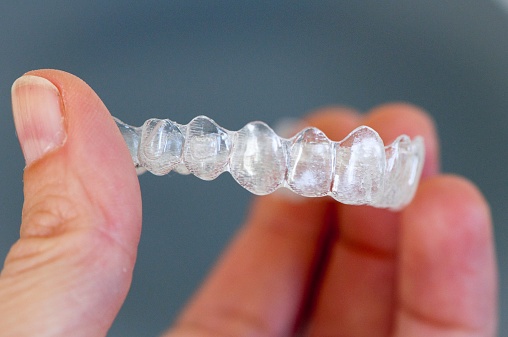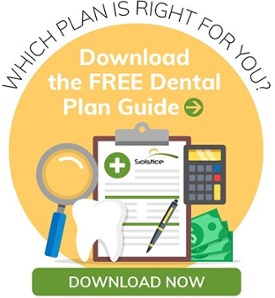By Kate Ranta on Dec 31, 2015 @ 03:52 PM
As an adult considering braces, you may be wondering if Invisalign is the way to go. After all, you may not want a mouth full of braces. Invisalign is more discreet, right?
That’s true, but it’s also more expensive. Here are the differences between braces and Invisalign for you to consider. It’s up to you to decide if it’s worth going the extra mile.
The Basics on Braces and Invisalign
Both braces and Invisalign work to straighten your teeth and improve your smile. But, there are key differences.
- Traditional braces are metal, clear or colored brackets glued to your teeth, and linked together by wires. The orthodontist tightens the wires to adjust and straighten your teeth. Tiny rubber bands are also used to pull and correct alignment.
- Invisalign, like the name indicates, is designed to be invisible (or at least subtle). It includes aligner trays made of smooth, clear splastic. These are worn over the teeth to gently move them. The orthodontist will take X-rays, pictures and impressions of your mouth to create a 3-D image of your teeth. He/she will configure the trays based on that image.
Brace and Invisalign: Key Differences
Not sure which way to go? Take a look at this comparison chart and take these points into consideration as you make a decision.
BRACES
- Metal (typically silver). Clear or colored can cost extra.
- Worn 24/7 for an average of two years—sometimes shorter, sometimes longer, depending on the patient.
- Costs anywhere from $1,800-$5,500.
- Brush brackets when brushing your teeth regularly. Particles can be difficult to get at, so a water pick may be necessary.
- Monthly orthodontic appointments.
- Cannot remove them, so less temptation to leave them out.
- Wires can cause pain and sores in the mouth. Food can get caught in the brackets and wires.
- Retainer necessary after braces come off to maintain smile. Worn typically at night.
INVISALIGN
- Clear and subtle appearance.
- Worn 22-24 hours a day for approximately 6-18 months, depending on patient needs.
- Costs an average of $5,000.
- Remove trays to brush teeth. Brush and rinse trays in lukewarm water to clean.
- Patients changes aligner trays every 2 weeks. Orthodontic appointments every 4-6 weeks.
- No issues with food getting caught. However, must remove trays before eating or drinking anything except water. Also must brush teeth after eating or drinking, before putting trays back in.
- Discomfort from movement of teeth, but not from wires as with braces.
- Retainer must be worn after treatment to maintain smile.
There you have it! In the end, it’s really up to you. But, if you are able to afford the extra expense, Invisalign may be the way to go—aesthetically and for convenience. However, whether you choose traditional braces or Invisalign, both are effective in giving you a winning smile!





comments